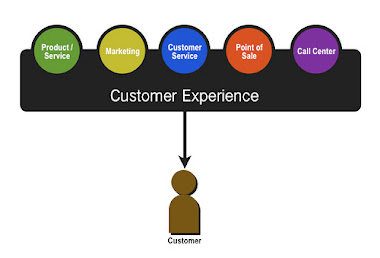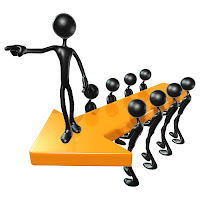Migrating an application to SaaS
(Software as a Service) means rethinking and redesigning the software in
several fundamental ways including changing the hosting model from
single to multi-tenant, the business model from perpetual license to
subscriptions and the update cycle from years to months.
The customer life cycle
But in our experience having designed over 60 SaaS applications, one
of the most significant changes is in the management of the customer
life cycle. Customer life cycle refers to the full progression of steps a
customer goes through when exploring, purchasing, using, getting
support and upgrading a product or service. With SaaS you build some or
all of these steps directly into the software. This is a dramatic shift
in software design but is essential to meet modern user expectations as
well as achieve scalability and profitability. Let me detail this out
further.
On-premise software customer life cycle (traditional)
With traditional on-premise software, the customer life cycle is
handled by many departments and individuals. There is a large upfront
sales effort with a protracted sales cycle, from a large team
(pre-sales, account manager, marketing, advertising) that "manages" the
buyer through the sales process. A purchase cannot even move forward
without engaging with the sales team. Installation/setup including
customization and provisioning requires a systems engineer or
consultant. Training and a post-sales support staff manage the usage and
on-going maintenance phases. A person in finance handles renewals. At
every customer life cycle "touch point", the buyer must engage with a
human gatekeeper that is outside of their everyday use of the "core"
application (e.g. the CRM or ERP).
SaaS customer life cycle
With SaaS, the above "high touch" model falls to pieces due to
economics and user expectations. When you migrate to SaaS you still
have your core application as the center of focus, but then you
systematically identify all of the points in a SaaS application where
the software or staff will touch the customer (e.g. early sales,
marketing, demos, provisioning, configuration, billing, monitoring,
renewals, support etc.). Based on your specific business, customer and
technology dimensions, you evaluate which of these touch points can and
should be migrated online and be built into the SaaS application.
Put in very broad buckets these touch points address:
- Purchasing & Deployment
- Configuration & Provisioning
- Usage
- Monitoring & Upsell
Designing for buyer self-service
In a pure SaaS model, the underlying economics mandate that almost
all of the touch points in the customer life cycle be designed,
delivered and managed via the SaaS application. So in addition to
delivering the core application, the software is designed to use
automation and self-service do the tasks that would otherwise require
support staff to service. Buyers can do these tasks on their own, right
within the software. This is essential to achieve economies of scale,
rapid iterations, and broad market appeal. When implemented correctly,
the cost of acquiring and supporting 100 customers should be just
marginally higher than for 1 customer.
Of course, pure SaaS is not appropriate to all business models. The
underlying business value of a piece of software may require unique
customer processes, or complex integration tasks that can't be
automated. The steps in the SaaS life cycle framework are however still
appropriate for developing a roadmap on how to design your SaaS.
Examine the touch points in the life cycle of your own organization and
your product to determine the appropriate combination of self-service
and high-touch services interacting with one another.
In some cases you may need to offer enhanced customization,
additional sales support, or on-site professional services, and the
premium you charge for this will cover the cost hit you take by not
being able to scale via automation or self-service. But even in these
cases, don't fall back on traditional on-premise software approaches.
You should still thoroughly examine all points in the customer life
cycle and determine the fundamental cost advantages of addressing each
component in software vs. with sales and support staff. This will help
you to align your business model with the underlying economics of how
the core application and supporting services are exposed to users.
A real world example
We worked with one of the leading SaaS CRM providers on a problem
they had with losing more than 20% of the people who initially signed up
for the service. Because SaaS makes it possible to track online
activities, we were able to determine where users were dropping out. The
company had assumed the problem was in their core application, but it
was actually in the customer life cycle during the provisioning and
customization process (that at this point was still being managed by
support staff). Once we knew where to work, we were able to move these
touch points into the application to create a smooth and simple user
experience to allow self-provisioning and customization. This very
effectively reduced the dropout rate.
A visual model
The below diagram explains the SaaS customer life cycle visually.

On the left is a traditional on premise solution. This inside area is
the part of the software that the customers touch i.e. the core
application. Around this on the outside are all of the touch points of
the application that are not built into the software. Someone has to
come in to sell it. Someone has to come into provision it. Someone has
to come in to customize. Someone has to come onsite to do training.
Etc. So there are many touch points that are not part of the design of
the software.
On the right is a SaaS application. You still have the core
application in the middle that users touch. But there are many points
around the core application but still inside the circle (the lifecycle
of that product) that users can touch. This includes things like trial
software, purchasing, configuration, provisioning etc. Buyers have an
expectation they can do these things on their own without the need to
interact with a sales or support person. Consequently the
implementation and user experience needs to be simple, easy and
effective.
As an organization you need to understand the life cycle touch points
that surrounds your product. If a touch point is inside the circle it
means buyers are going to touch it as part of the software. If outside
the circle it means that aspect will not be built into the software.

